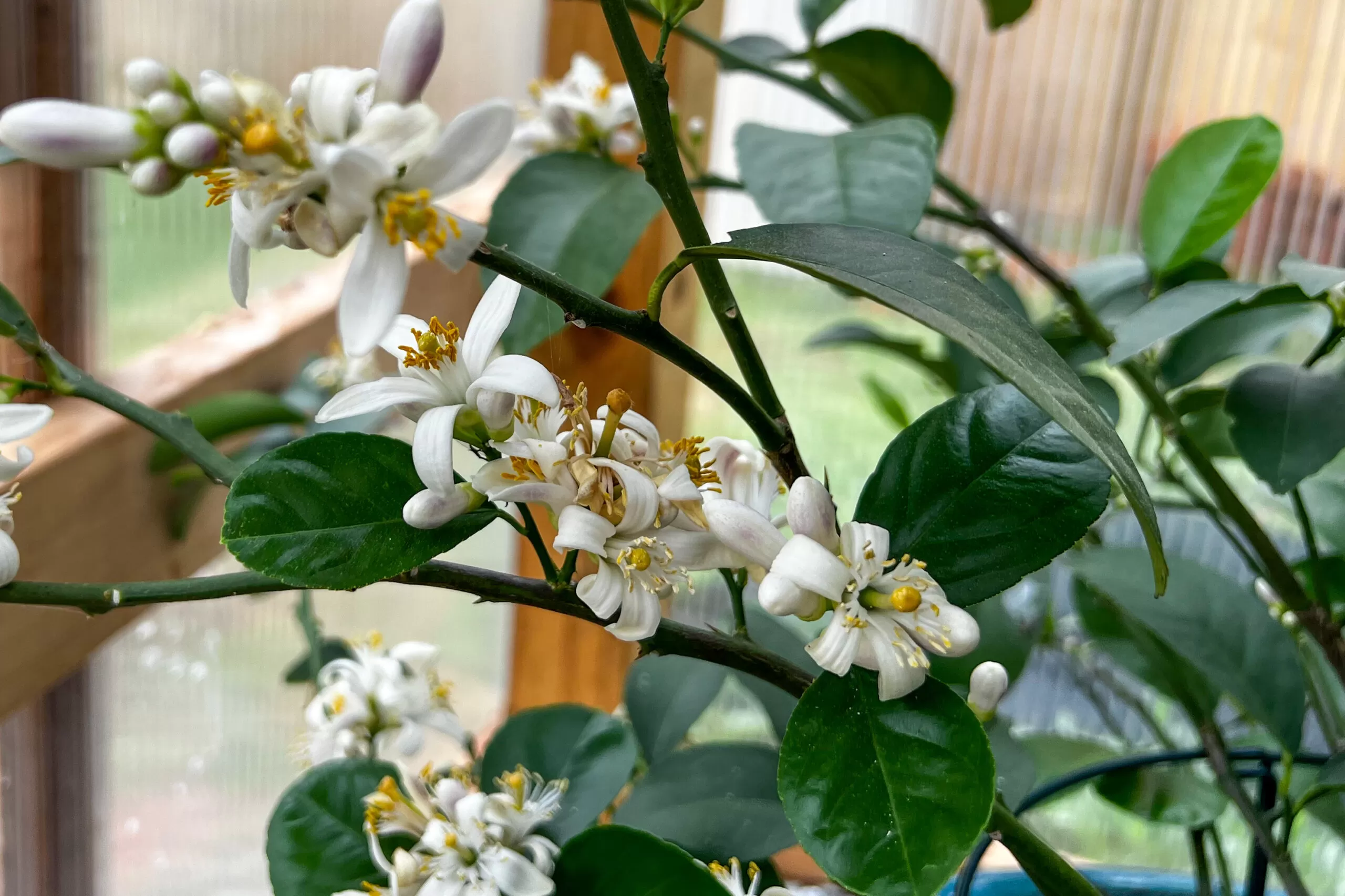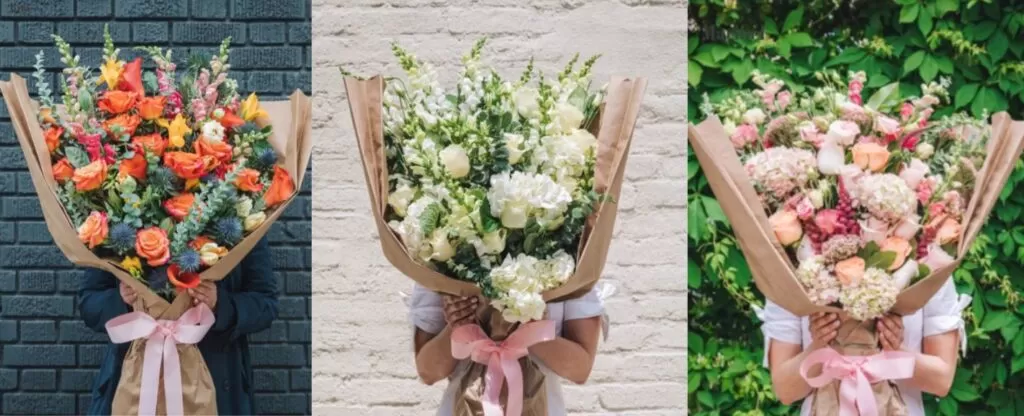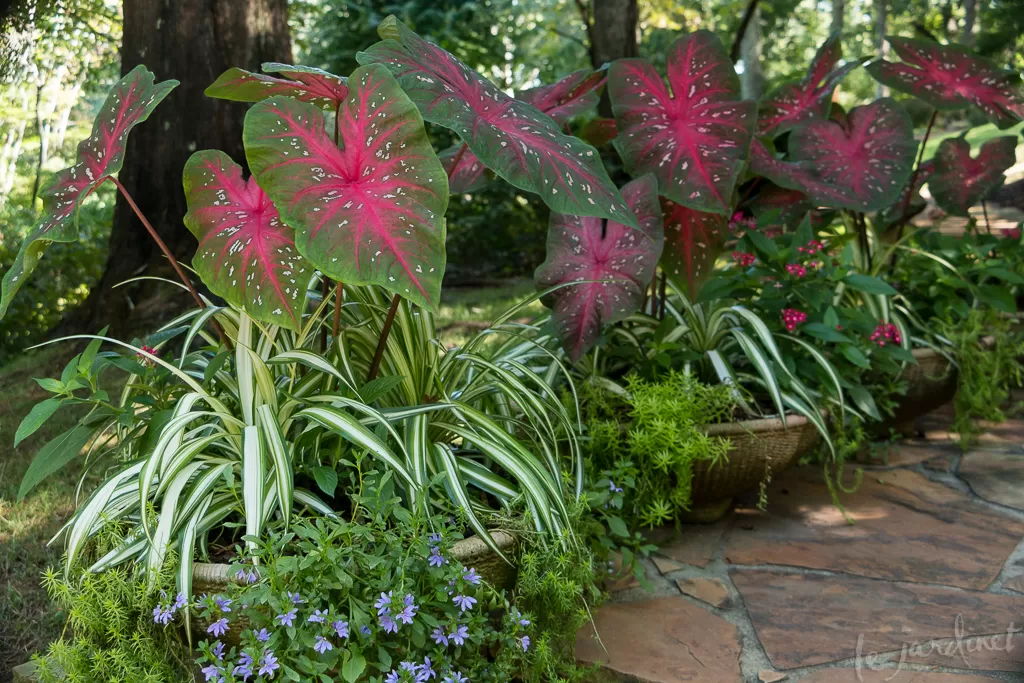- Discover how to use planters to create tranquil, Zen-inspired spaces.
- Learn the principles of asymmetry and simplicity for peaceful arrangements.
- Find the right plants and planters to foster a sense of calm and mindfulness.
- Turn any corner, indoors or out, into a personal sanctuary for contemplation.
Imagine a quiet corner in your home or garden, a small pocket of peace designed purely for reflection and stillness. This isn’t about elaborate landscaping; it’s about intentionally creating a sanctuary. One powerful way to achieve this is through thoughtfully arranged meditation planter groupings. Drawing inspiration from the timeless tranquility of Japanese Zen gardens, we can use containers to distill the essence of calm into even the smallest spaces, inviting mindfulness and a deeper connection to nature’s simple beauty.
Contents
- What Are Meditation Planter Groupings?
- Why Use Planters for Your Meditation Space?
- Key Elements for Your Meditation Planter Grouping
- Plant Selection: Form, Texture, and Meaning
- Choosing the Right Planters: Form Meets Function
- Arranging Your Grouping: The Art of Asymmetry
- The Color Palette of Calm
- Designing for Tranquility: Putting It All Together
- FAQs
- Can I create a meditation planter grouping indoors?
- Which planter shapes are best for meditation planter groupings?
- How should I arrange multiple planters for a meditation grouping?
What Are Meditation Planter Groupings?
Inspired by the profound philosophy of Japanese Zen gardens (Kare-Sansui), meditation planter groupings are curated arrangements of plants and containers designed to evoke serenity and encourage contemplation. Unlike traditional flower beds, these groupings prioritize form, texture, negative space, and subtle symbolism over vibrant blooms or dense planting. They translate the core principles of dry landscape gardens – simplicity, naturalness, asymmetry, and tranquility – into a format accessible for patios, balconies, or indoor settings. The goal is not just visual appeal, but the creation of a focused, peaceful vignette that aids in quiet reflection and mindfulness.
Why Use Planters for Your Meditation Space?
Creating a dedicated spot for meditation and mindfulness doesn’t always require a large garden. Planters offer incredible flexibility and control, making them ideal for cultivating a tranquil retreat in diverse environments:
- Space Efficiency: Planters allow you to bring the essence of a calming landscape to small areas like balconies, patios, or even indoors on a windowsill or table.
- Focused Elements: By containing plants and design elements, planters help define a specific area for contemplation, creating a visual anchor for your meditative practice.
- Design Control: You have complete command over soil, plant selection, and the arrangement of individual containers, ensuring each element contributes to the desired atmosphere of peace.
- Portability: Unlike in-ground gardens, planter groupings can often be rearranged or moved, allowing you to adapt your meditation space as needed or follow the best light conditions.
They provide a contained world, a microcosm of nature that you can tend, observe, and draw peace from.
 A serene Japanese Zen garden with winding gravel paths, stone lanterns, lush greenery, and blooming cherry blossom trees surrounded by bamboo and statues.
A serene Japanese Zen garden with winding gravel paths, stone lanterns, lush greenery, and blooming cherry blossom trees surrounded by bamboo and statues.
Key Elements for Your Meditation Planter Grouping
Crafting a successful meditation planter grouping involves mindful selection and arrangement of both the plants and their containers, guided by aesthetic principles that foster peace.
Plant Selection: Form, Texture, and Meaning
Choosing the right plants is crucial. The focus is on structural form, varied textures, and subtle symbolism rather than bright flowers. Green is the dominant color, explored through myriad shades and leaf shapes.
- Structural Plants: Provide backbone and definition. Think of plants with strong shapes or interesting branching patterns.
- Textural Plants: Offer contrast – fine grasses against broad leaves, soft moss against rugged bark.
- Symbolic Plants: Many plants carry cultural meaning, adding layers to your design (e.g., pine for longevity).
Here are some suitable plant choices, often used in Zen-inspired designs:
- Japanese Maple
- Scientific Name: Acer palmatum
- Common Name: Japanese Maple
- Zone: 5-8 (varies by cultivar)
- Light: Partial shade is often best to prevent leaf scorch, especially in hot climates.
- Humidity: Average
- Water: Consistent moisture, well-drained soil.
- Notes: Valued for delicate leaves, graceful form, and seasonal color. Use dwarf varieties in containers.
- Pines
- Scientific Name: Pinus species (e.g., Pinus parviflora ‘Negishi’, Pinus densiflora ‘Umbraculifera’)
- Common Name: Pine (Dwarf or selected varieties)
- Zone: Varies by species (often 3-8)
- Light: Full sun
- Humidity: Average
- Water: Drought tolerant once established, but needs regular water in containers.
- Notes: Symbolize endurance. Choose dwarf or slow-growing cultivars for containers. Can be pruned to enhance shape.
- Bamboo
- Scientific Name: Fargesia species (clumping types)
- Common Name: Clumping Bamboo
- Zone: Varies by species (often 5-9)
- Light: Partial shade to full sun, depending on species.
- Humidity: High humidity preferred, but adaptable.
- Water: Needs consistent moisture, especially in containers.
- Notes: Provides strong vertical lines and gentle sound. Use clumping varieties in sturdy containers to prevent spreading.
- Azaleas
- Scientific Name: Rhododendron species (evergreen varieties often used)
- Common Name: Azalea
- Zone: Varies by species (often 4-9)
- Light: Partial shade
- Humidity: High preferred.
- Water: Consistent moisture, acidic, well-drained soil.
- Notes: Often pruned into dense, mounded forms. Flowers are secondary to shape in this context.
- Boxwood
- Scientific Name: Buxus species
- Common Name: Boxwood
- Zone: Varies by species (often 4-9)
- Light: Full sun to partial shade.
- Humidity: Average
- Water: Needs consistent moisture, especially in hot weather.
- Notes: Excellent for pruning into geometric or organic shapes, providing evergreen structure.
- Camellia
- Scientific Name: Camellia japonica or Camellia sasanqua
- Common Name: Camellia
- Zone: 6-10 (varies by species/cultivar)
- Light: Partial shade.
- Humidity: High preferred.
- Water: Consistent moisture, acidic, well-drained soil.
- Notes: Provides glossy evergreen foliage and formal structure. Flowers are subtle winter/spring accents.
- Ferns
- Scientific Name: Various species (e.g., Dryopteris, Polystichum)
- Common Name: Fern
- Zone: Varies widely (often 3-9)
- Light: Shade or partial shade.
- Humidity: High preferred.
- Water: Consistent moisture, well-drained soil.
- Notes: Offer delicate, intricate textures that contrast well with rocks and bold leaves.
- Hosta
- Scientific Name: Hosta species
- Common Name: Hosta
- Zone: 3-9
- Light: Shade to partial shade (can vary by cultivar).
- Humidity: Average.
- Water: Consistent moisture.
- Notes: Provide bold leaf forms and substantial texture for shaded areas.
- Mondo Grass
- Scientific Name: Ophiopogon species (e.g., Ophiopogon japonicus, Ophiopogon planiscapus ‘Nigrescens’)
- Common Name: Mondo Grass, Black Mondo Grass
- Zone: 6-10 (varies by species)
- Light: Partial shade to full sun.
- Humidity: Average.
- Water: Moderate moisture, well-drained soil.
- Notes: Creates dense, fine-textured groundcover or soft edging.
 Selecting plants for their form, texture, and symbolic meaning is key to a peaceful planter grouping.
Selecting plants for their form, texture, and symbolic meaning is key to a peaceful planter grouping.
Choosing the Right Planters: Form Meets Function
The containers themselves are significant design elements. Embrace the principle of Kanso (simplicity) when selecting planters for your meditation grouping.
- Suitable Styles: Look for clean, minimalist shapes. Low bowls, simple cylinders, rectangular troughs, and grounded cubes work well. Avoid anything overly decorative, ornate, or fussy. The form should feel stable and understated.
- Material Matters: Choose materials that feel natural or enduring. Fiberglass is an excellent modern option that embodies key principles.
Planters Etc. fiberglass planters align beautifully with this aesthetic due to:
- Durability & Longevity: Fiberglass is tough and weather-resistant, reflecting the Zen value of permanence and enduring elements.
- Clean Forms: Allows for the precise, simple shapes favored in minimalist design.
- Natural Finishes: Available in matte, neutral colors and textures that mimic stone or earth, integrating seamlessly without distracting.
- Quality Craftsmanship: The care in creating each piece resonates with the mindful practice of garden design and maintenance.
Using quality planters ensures your grouping looks serene and lasts, minimizing distractions from wear and tear.
Arranging Your Grouping: The Art of Asymmetry
This is where the “groupings” aspect comes to life, drawing heavily on Fukinsei (asymmetry) and the importance of negative space (ma).
- Odd Numbers: Group planters in odd numbers (three, five) as this often creates a more dynamic and visually interesting composition than symmetrical pairs.
- Varying Heights and Shapes: Combine planters of different heights and shapes within the grouping to create visual rhythm and depth. A tall cylinder, a low bowl, and a medium cube arranged together can be far more compelling than three identical pots.
- Focus on Negative Space: The space between the planters is as important as the planters themselves. Allow for calm, empty areas. Don’t overcrowd the arrangement.
- Create a Focal Point: One planter or plant within the grouping can serve as a subtle focal point, around which the other elements are arranged.
- Suggest a Landscape: Arrange the planters to subtly suggest natural forms – a taller one as a mountain, a lower one as an island, surrounded by a “sea” of raked gravel or fine groundcover texture within the arrangement or the space around it.
 Large rounded planters with tall bamboo plants add height and balance to a tranquil Japanese Zen garden, surrounded by raked gravel, moss, and traditional stone lanterns.
Large rounded planters with tall bamboo plants add height and balance to a tranquil Japanese Zen garden, surrounded by raked gravel, moss, and traditional stone lanterns.
The Color Palette of Calm
True to the Zen aesthetic, the color scheme for your meditation planter grouping should be restrained and drawn from nature’s own palette.
- Dominant Neutrals: Greens from foliage, greys and browns from stone, bark, and soil, and white or light grey from gravel or sand are the foundation.
- Subtle Accents: Color appears sparingly, often from seasonal changes like autumn leaves or the brief bloom of a carefully selected plant. These moments highlight the transient beauty of nature.
When selecting planter colors from the Planters Etc. range, opt for matte, neutral finishes like Black, White, Charcoal, Grey, Pewter, Bronze, or Beige. These colors recede and support the plant and the overall peaceful feeling, rather than competing for attention.
 A person in a white robe walks along a curved stone path through a tranquil Japanese garden, surrounded by lush greenery and a vibrant red maple tree glowing in soft morning light.
A person in a white robe walks along a curved stone path through a tranquil Japanese garden, surrounded by lush greenery and a vibrant red maple tree glowing in soft morning light.
Designing for Tranquility: Putting It All Together
Creating an effective meditation planter grouping is an exercise in thoughtful restraint and adherence to core principles.
 A modern Zen-inspired garden with a central stepping stone path flanked by black gravel, geometric planters filled with lavender and greenery, and tall matte black tapered planters near a wooden patio and fence.
A modern Zen-inspired garden with a central stepping stone path flanked by black gravel, geometric planters filled with lavender and greenery, and tall matte black tapered planters near a wooden patio and fence.
- Embrace Simplicity (Kanso): Less is more. Each plant, each planter, each stone (if added) should earn its place. Allow for significant empty space; it’s crucial for creating a sense of calm and allowing the eye to rest.
- Master Asymmetry (Fukinsei): Avoid mirror-image balance. Arrange your grouping so that balance is achieved through the careful weighting of elements that are not identical. This feels more natural and dynamic.
- Cultivate Naturalness (Shizen): While stylized, the arrangement should feel organic. Choose plants suited to your conditions and let them express their natural form (with minimal, purposeful pruning). Select planter finishes that feel grounded and natural.
- Hint at Meaning (Yugen): Let your arrangement suggest deeper ideas. A grouping of smooth stones beside a textured plant can evoke a shoreline. A single tall plant among lower ones can represent a forest edge.
- Prioritize Tranquility (Seijaku): Step back and observe. Does the grouping feel peaceful? Does it invite you to pause and breathe? Remove anything that feels chaotic or distracting.
- Consider Scale: Ensure the size of your planters and plants is appropriate for the space they occupy. A small balcony needs smaller, fewer elements than a large patio corner.
- Mindful Maintenance: Tending to your meditation planter grouping can become part of your mindfulness practice. Watering, light pruning, and wiping down planters are opportunities for quiet focus. Using durable, high-quality planters simplifies the structural care, allowing you to focus on the meditative aspects.
Creating meditation planter groupings is more than just decorating; it’s about cultivating a feeling, designing a small retreat that supports your inner peace. By carefully selecting plants, choosing simple, high-quality planters in natural tones, and arranging them with intention, you can shape a corner of your world into a sanctuary for quiet contemplation. Explore the possibilities with durable, beautifully crafted fiberglass planters and begin shaping your own tranquil space.
FAQs
Can I create a meditation planter grouping indoors?
Absolutely. Choose plants suited for indoor conditions (e.g., Snake Plant, ZZ Plant, Pothos, or small Ficus varieties) and select planters that complement your interior aesthetic while maintaining the principles of simplicity and naturalness. Focus on texture, form, and negative space just as you would outdoors.
Which planter shapes are best for meditation planter groupings?
Sleek cylinders, low bowls, rectangular troughs, and simple square or cube planters are excellent choices. Look for clean lines and stable forms that feel grounded. Avoid pedestals or overly decorative shapes that draw too much attention away from the plants and the overall composition.
How should I arrange multiple planters for a meditation grouping?
Think in odd numbers (3, 5, etc.) and vary heights, shapes, and textures. Arrange them asymmetrically, leaving purposeful space between them. Consider how the grouping looks from different angles if it will be viewed from multiple sides. The goal is a balanced, harmonious composition that avoids strict symmetry.






































